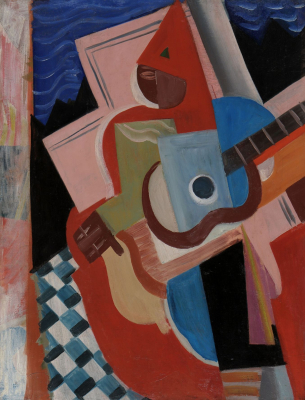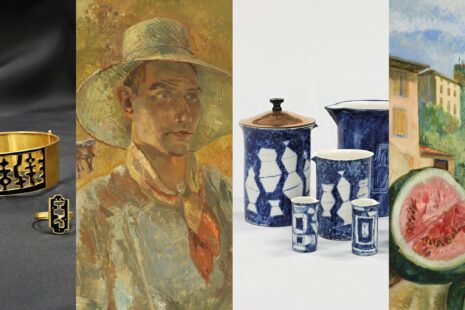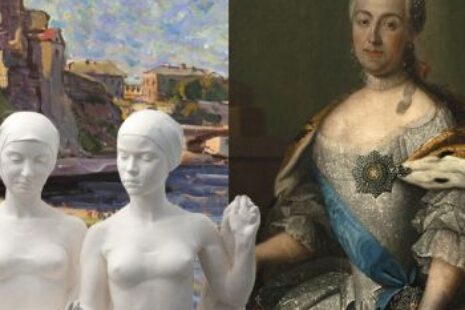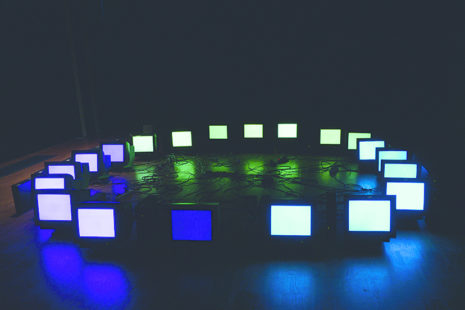Masks, though not carnival ones, have become part of our everyday lives. The Spanish flu was raging a century ago, and in the wake of the horrors of World War I, people were yearning for joy and merriment. Balls, carnivals, dance evenings, events in honour of various reasons – reading both Latvian and foreign press of that time gives the impression that the 1920s and 1930s were a continuous celebration, one long party between two world wars. The French poet and artist Jean Cocteau called this period “eternal 14 July” – the date of the French national holiday, marking the anniversary of Bastille’s capture, which is considered a symbolic moment of birth of the French Republic. Latvians did not lag behind – in the 1920s and 1930s, every corporation, every association, even government institutions regularly held carnivals. Artists, of course, did the same.
The carnivals organized by artists in Riga during the two decades were titled A Night in the Latin Quarter, In the Castle of the Werewolf, A Benedictine Cloister etc., while in Paris at that time happened The Transmental Ball, The Banal Ball, Ball of Four Arts. Stories about them conjure up at the exhibition the festive atmosphere of the bygone era.The outline is illustrated by original photographs of the events and their reproductions. Thanks to fashion historian Alexandre Vassiliev (Александр Васильев) and his collection, costumes ever worn at Riga carnivals are also on display.
Photographs and news articles about the costumes at the carnivals show that the most popular masks were those of Pierrot, Columbine and Harlequin – the classical images from Italian commedia dell’arte. Each of mentioned characters had its own history, origins, meaning and symbolic nature. Many artists depicted these figures over the course of the centuries, and among them were 20th-century Modernists – Pablo Picasso, Juan Gris, Henri Matisse, Marc Chagall, Amedeo Modigliani, Gino Severini, and others. Harlequin was clever and wise, while Pierrot was kind and melancholic. In artworks, Pierrot often symbolized the tragic perception of the world, but during the interwar period, his image took on new moods which allegorically embodied the pessimism of the “lost generation”. Such contradictory symbolism of images fit in well with the ambivalent nature of Art Deco style and interwar art in general, featuring a rebirth of classical tradition in combination with the radical Modernism of the early 20th century, desire for pleasure and disappointment in ideals. Latvian Modernists were part of these trends, as is seen in the art of Romans Suta, Aleksandra Beļcova, Ludolfs Liberts, Jānis Muncis and other authors whose oeuvre is presented at this exhibition.
The artworks and other objects on show come from the Graphic Art Collection of the Latvian National Museum of Art, the Romans Suta and Aleksandra Beļcova Museum, the Museum of Writing and Music, the Alexandre Vassiliev Foundation, and private collections.
EXHIBITION CURATORS:
Dr. art. Natalya Yevseyeva (Наталья Евсеева), Head of the Romans Suta and Aleksandra Beļcova Museum / The Latvian National Museum of Art / Riga, Latvia
Dr. art. Aleksey Petukhov (Алексей Петухов), Senior Researcher of the Department of 19th and 20th Century European and American Art / The Pushkin State Museum of Fine Arts / Moscow, Russia
Gallery name: Museum of Romans Suta and Aleksandra Beļcova
Address: Elizabetes iela 57a, Apt. 26 Rīga, Riga
Opening hours: Tue 11:00 - 19:00, Wed-Sat 11:00 - 18:00
Open: 04.06.2021 - 15.01.2022







